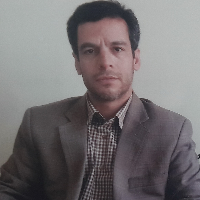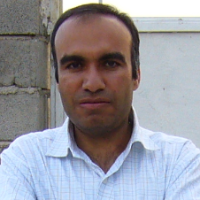Spatial Analysis of Economic Factors Affecting Agricultural Production
Agriculture is one of the most important economic sub-sectors of the country, accounting for about 9 percent of GDP, 21 percent of non-oil export value, about 18 percent of employment, and nearly 93 percent of community food and raw material production in many other industries. Also, agricultural and horticultural products account for the bulk of foreign trade in agricultural sector and a large share of the household basket. Thus, issues related to maintaining the production capacity and economic power of this sub-sector can affect economy of the country .In this study, crops and horticultural crops were considered as agricultural crops. According to statistics of the Ministry of Agriculture Jihad and statistical yearbooks of National Statistics Portal, from 2011 to 2016, the area under cultivation of crops and horticulture increased by 367252 hectares there was an increase of 24119617 tonsin production of these crops and the value added of agricultural sector increased by 1693951 billion Rials in these years.
In this study, spatial data model was used to study the economic factors affecting agricultural production (crop and horticulture) in Iran provinces during the period 2011-2017. The required information was obtained from the National Statistics Portal, Statistical Yearbooks and Agricultural Statistics of Iran. The spatial scope of this study covers all provinces of Iran and since this study is a regionalone, its main issue will be examined in the form of spatial analysis.Specifying research modelAccording to theoretical foundations and spatial econometric model, the model specified in this study is SAC model.𝑃 𝑖𝑡=α+ρ∑j Wij.Pit +𝛽1𝐶𝐴𝑖𝑡. +𝛽2. 𝐺𝐼𝑁𝐼𝑖𝑡 + 𝛽3. 𝐼𝑁𝐹𝑖𝑡 + 𝛽4. 𝑈𝑅𝑖𝑡+ 𝛽5. 𝑌𝑂𝑖𝑡 + 𝛽6. 𝐺𝐷𝑃𝑖𝑡 + 𝛽7. 𝑉𝐴𝑎𝑔𝑟𝑖𝑖𝑡 + Uit𝑈𝑖𝑡 =λ 𝑊𝑈𝑖𝑡 + 𝜀𝑖𝑡 In this model i: provinces, t: time, α: the width of the origin and β: the coefficients of the explanatory variables (slope coefficients). (P):Production. (CA): Crop cultivation area. (Gini): Gini coefficient. (INF): Inflation Rate. (UR): Urban Rate. (YO): Youth Population Ratio. (GDP): Gross Domestic Product. (VAagri): Value Added Agricultural Sector.The SAC model is selected to estimate this research.
According to the results of this study, according to SAC model, the impact of economic factors on crop and horticultural production in the provinces of Iran was estimated. Variables from the stipulated model that were significant at 5% level include area of cultivation, inflation rate, youth population ratio, GDP and agricultural value added. In this study, direct and indirect effects of the explanatory variables were estimated.
The results of general spatial model analysis showed that cultivation area, inflation rate, youth population ratio, GDP and agricultural value added were factors influencing crop production and horticulture in the studied provinces. It was observed that income distribution and urbanization rate were not significant in the model, whilesignificant variables of the model, variables of inflation rate and youth population ratio, area of cultivation, GDP and agricultural added value at 5% level were directly related to production.Therefore it is suggested:1- Considering inflation rate, authorities should implement incentive policies to attract more investors to agriculture sector.. 2. In government support services, farmers’ land features such as the area of cultivation, equipment, and farming equipment should be paid attention. 3. Given that the proportion of young people has a positive and significant effect on the growth of agricultural production, it is suggested to managers and planners of the agricultural sector that more youth should be supported, provided with incentives and incentives so as to improve production. 4.Based on results as the area under cultivation has a significant and direct impact on agricultural production, individuls and authorities are recommended to maintain and exploit farmland reasonably because rehabilitation and enrichment of land which has been cultivated several times and is drained of minerals is costly.
- حق عضویت دریافتی صرف حمایت از نشریات عضو و نگهداری، تکمیل و توسعه مگیران میشود.
- پرداخت حق اشتراک و دانلود مقالات اجازه بازنشر آن در سایر رسانههای چاپی و دیجیتال را به کاربر نمیدهد.






